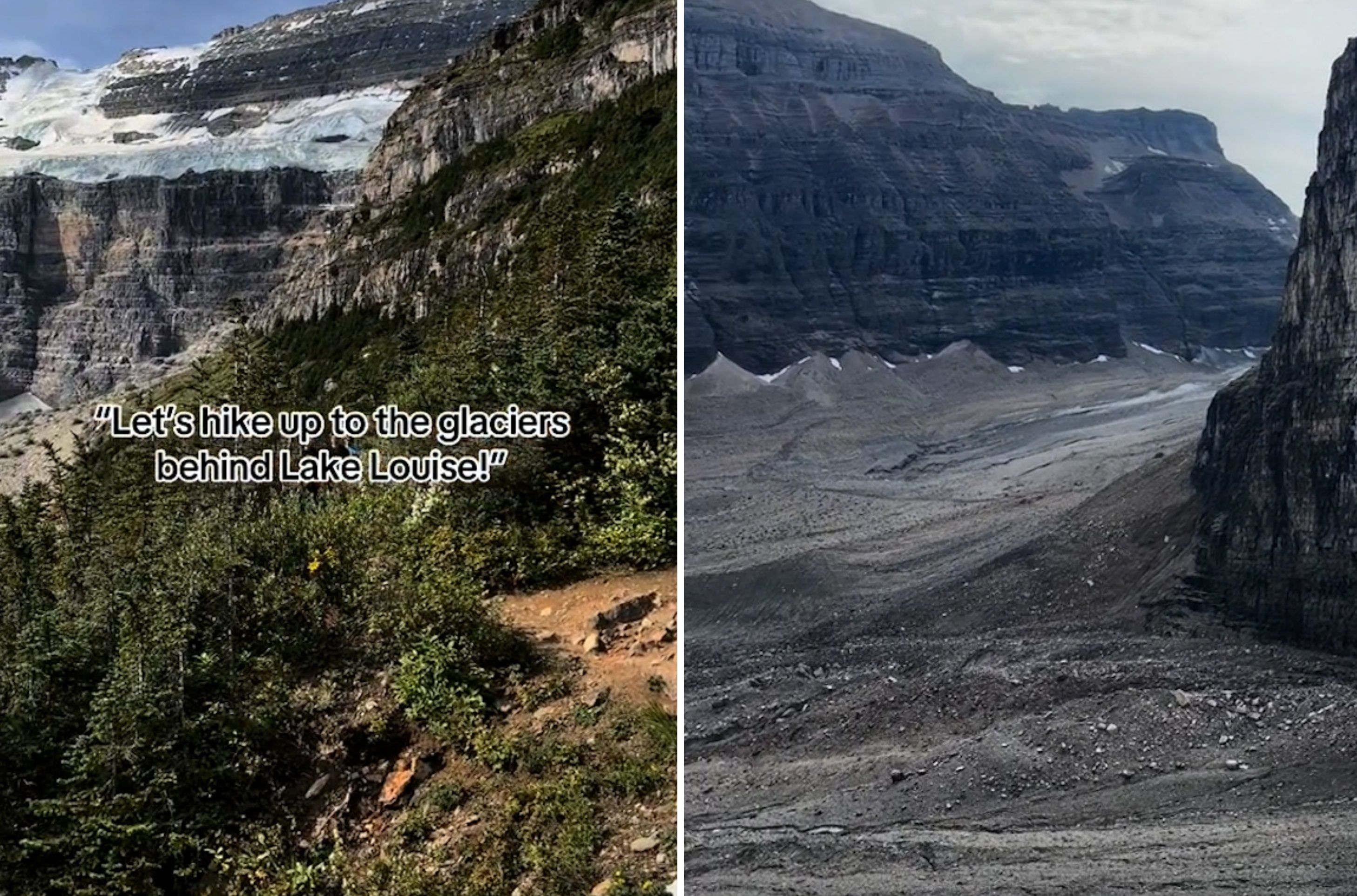Travel
Nature filmmaker travels to famous glaciers, not prepared for what he finds

A nature filmmaker’s footage of a hike in the Canadian Rockies has gone viral for highlighting what appears to be the effects of climate change on glaciers there.
Keith Egglefield’s video, shared to the TikTok account @ramblecanada, shows people heading up a mountain trail in Alberta, with on-screen text that reads: “Let’s hike up to the glaciers behind Lake Louise!”
But the scene quickly shifts and the camera pans to an empty, rocky terrain, another overlaid caption says “What glaciers?,” noting the stark absence of visible ice.
“This was taken on the Plain of Six Glaciers hike, which takes you behind Lake Louise up to the glaciers that feed the lake,” Egglefield, a Vancouver-based environmental videographer and content creator, told Newsweek. “But even to me as a first-timer, I was a bit shocked by how small they seemed.”
@ramblecanada on TikTok
The video, taken on September 2, has amassed over 460,000 views since it was posted on October 2.
Egglefield also shared it on Reddit, where it garnered numerous comments from people who had previously visited the area. “Many commenters pointed out that they [the glaciers] had receded a lot since they had been there in the past,” he said. The video has prompted discussion not only about the shrinking glaciers but also about the broader impacts of climate change.
Glaciers in Rapid Decline
Egglefield’s footage comes at a time when scientists are closely monitoring the rapid melting of glaciers across the globe. According to Matthew Cappucci, an atmospheric scientist and senior meteorologist at the MyRadar weather app, the phenomenon is becoming increasingly common.
“Glaciers melt during the warm season, and added snowpack helps return mass in the wintertime,” Cappucci told Newsweek. “In a perfectly balanced world, the gain and loss of mass over the course of a year would be roughly the same. But as we tip the scales toward warmer extremes, we melt more than we regain during the cold season.”
Cappucci also noted that the region around Lake Louise has been particularly affected. “Between 1985 and 2005, 29 glaciers in Banff disappeared, and the overall area covered by ice dropped from 241 square miles to 193 square miles,” he said.
Highlighting a statistic from a report by the World Wildlife Fund, Cappucci said “the glaciers of the Canadian Rockies lost 25 percent of their mass in the 20th century. That’s a considerable decline.”
A Broader Global Trend
Mauri Pelto, who is a member of the science advisory board for NASA Earth Observatory and the director of the North Cascade Glacier Climate Project, has spent 40 years monitoring the response of glaciers to climate change, being in the field every summer since 1981.
Pelto said that the retreating glaciers in Lake Louise are part of a global trend.
“The story is not just about glaciers around Lake Louise, but that all glaciers, from the Wind River Range, Wyoming to Mount Robson, British Columbia, and from Mount Shasta in California to Glacier Bay in Alaska, are losing volume and area rapidly in the last decade,” Pelto said.
He explained that many glaciers are now left exposed without snow cover by the end of summer, with their surfaces darkened by rock debris. This darker surface accelerates the melting process.
“Of the 31 glaciers I have stood on and observed that have disappeared in my 41 consecutive years of work, 24 have been lost in the last decade,” Pelto said. This rate of loss is driving scientists to classify some glaciers as “extinct,” a designation for glaciers that existed when global inventories began but have since vanished completely.
Pelto also highlighted the importance of understanding not only the visible changes but also the underlying consequences of glacial decay. Referring to images of an ice cave, Pelto said, “It is worth thinking about the decay on the surface evident in the TikTok video and the hollowing out below the surface in caves like this that form under rapidly melting glaciers that are stagnant.”
An Urgent Call for Action
Cappucci said that the rapid melting of glaciers has broader implications beyond the environmental impact.
“We’ve noticed an uptick in the rate of melting in the past 20 to 30 years, and that pace may continue to accelerate,” he said. “The melting glaciers are resulting in changes in habits for some species, but more importantly, they reflect a changing climate that is having broader-scale societal implications.”
As glaciers continue to disappear, the ecosystems and water supplies that rely on them face unprecedented changes. The visual reminder in Egglefield’s video serves as both a snapshot of the current climate crisis and a stark warning about what may lie ahead.










